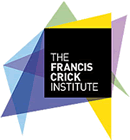About the Project
This 4-year PhD studentship is offered in Dr James Briscoe’s Group based at the Francis Crick Institute (the Crick).
How are the right types of cells produced in the right place, at the right time, in the right amounts in a developing tissue? In many cases, naïve cells use graded signals, termed morphogens, as positional cues to determine the pattern of cellular differentiation. This raises the question of how a single signal determines the pattern of multiple cell types. We study these questions in the developing spinal cord, which, despite its complexity, is assembled in a remarkably precise and reliable manner. This precision is necessary for the wiring of nerves into the neural circuits that gives the spinal cord its function. In ventral regions of the caudal neural tube, the secreted molecule Sonic Hedgehog (Shh) forms an extracellular gradient that governs pattern formation and tissue growth. It does this by regulating the expression of a set of genes, notably transcription factors, which control the identity and proliferation of neural progenitors. Using a range of molecular, imaging and modelling approaches that combine single cell resolution dynamic assays of morphogen signaling, cell fate specification, gene regulation and growth we are examining how the gradient of Shh signalling is perceived and interpreted by cells to control gene expression and cell behaviour. We employ novel computational tools and dynamical systems models to obtain a comprehensive view of neural tube development and to analyze the interdependence between different aspects of pattern formation. For our experimental studies we use a range models including mouse and chick embryos and mouse and human embryonic stem cells.
Although rapid progress has been made with in vitro differentiation of embryonic stem cells into tissue-mimicking 2D and 3D assemblies of the neural tube, existing methods largely rely on self-organisation with limited control over the resulting molecular and cellular composition. The aim of this project is to move beyond these adventitious approaches and establish methods for precision tissue engineering. Molecular organisation will be governed by establishing approaches that instruct spatial-temporal pattern formation in vitro. To guide and integrate the experimental work predictive in silico models will be employed. The ultimate goal - reverse engineering the neural tube – will complement ongoing analytical studies and offer insight into fundamental neural development mechanisms
Collaborations with physicists and computational biologists have been established to support data analysis and model testing. The project offers interdisciplinary training in cutting edge techniques in stem cell and developmental biology and will provide insight into the mechanisms and principles of the gene regulatory programmes that underpin tissue development. This will contribute to understanding the development of the spinal cord as well as shed light on the diseased and damaged nervous systems.
Talented and motivated students passionate about doing research are invited to apply for this PhD position. The successful applicant will join the Crick PhD Programme in September 2019 and will register for their PhD at one of the Crick partner universities (Imperial College London, King’s College London or UCL).
Applicants should hold or expect to gain a first/upper second-class honours degree or equivalent in a relevant subject and have appropriate research experience as part of, or outside of, a university degree course and/or a Masters degree in a relevant subject.
APPLICATIONS MUST BE MADE ONLINE VIA OUR WEBSITE (ACCESSIBLE VIA THE ‘APPLY NOW’ LINK ABOVE) BY 12:00 (NOON) NOVEMBER 13 2018. APPLICATIONS WILL NOT BE ACCEPTED IN ANY OTHER FORMAT.
References
1. Sagner, A., Gaber, Z. B., Delile, J., Kong, J. H., Rousso, D. L., Pearson, C. A., . . . Novitch, B. G. (2018)
Olig2 and Hes regulatory dynamics during motor neuron differentiation revealed by single cell transcriptomics.
PLOS Biology 16: e2003127. PubMed abstract
2. Zagorski, M., Tabata, Y., Brandenberg, N., Lutolf, M. P., Tkačik, G., Bollenbach, T., . . . Kicheva, A. (2017)
Decoding of position in the developing neural tube from antiparallel morphogen gradients.
Science 356: 1379-1383. PubMed abstract
3. Sagner, A. and Briscoe, J. (2017)
Morphogen interpretation: concentration, time, competence, and signaling dynamics.
Wiley Interdisciplinary Reviews. Developmental Biology 6: e271. PubMed abstract
4. Demers, C. J., Soundararajan, P., Chennampally, P., Cox, G. A., Briscoe, J., Collins, S. D. and Smith, R. L. (2016)
Development-on-chip: in vitro neural tube patterning with a microfluidic device.
Development 143: 1884-1892. PubMed abstract
5. Briscoe, J. and Small, S. (2015)
Morphogen rules: design principles of gradient-mediated embryo patterning.
Development 142: 3996-4009. PubMed abstract

 Continue with Facebook
Continue with Facebook

